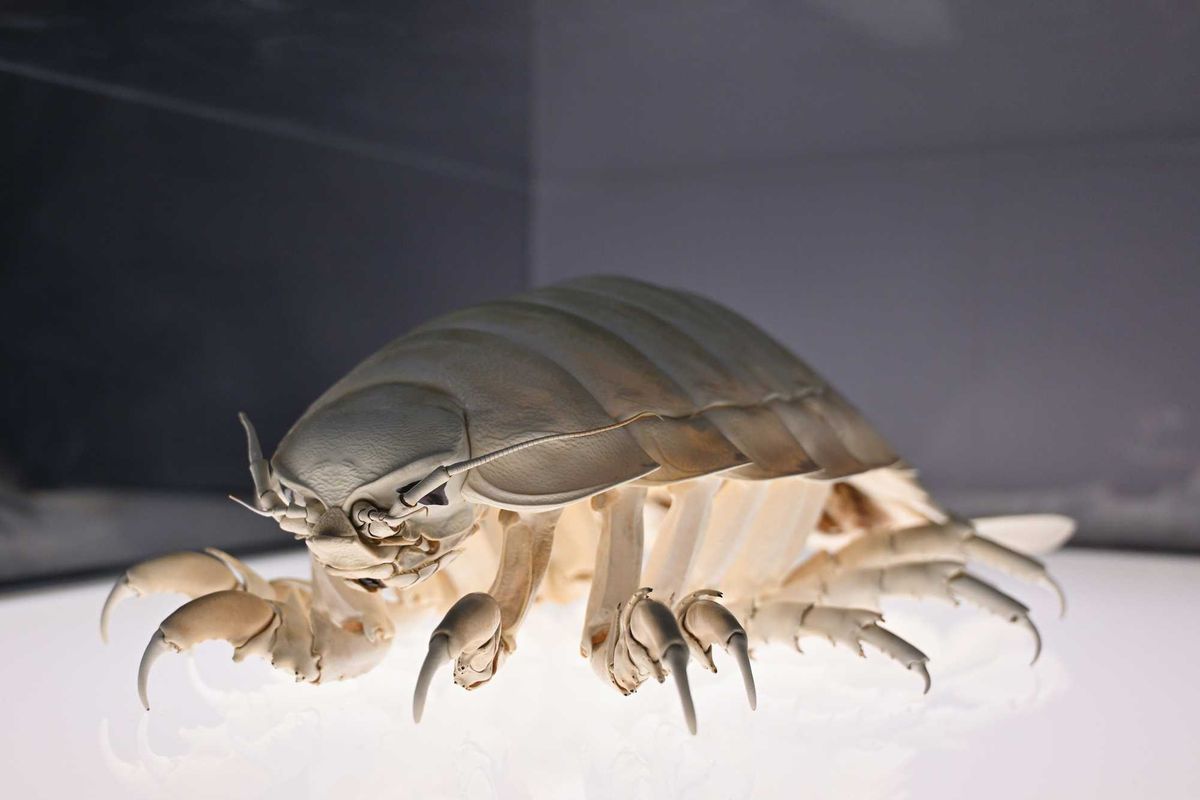Some back-to-school clothes aren't good for the planet. Here’s a better option.
The most sustainable clothes are the ones that already exist.
There are three constants in late summer life.
One: It’s impossible to apply sunscreen without missing a spot. Two: S'mores that fall in the campfire for a few seconds just taste better. Three: Nothing is a bigger adrenaline hit than back-to-school shopping.
Instantly iconic. GIF from "Clueless."
Thanks to the internet and fast-fashion outlets, buying stylish new clothes on the cheap is easier than ever before. Designs that used to march down the runway a year before they’d show up in your local department store are now being churned out for sale in just a few weeks. Keeping people looking Instagram-worthy is a $3 trillion-dollar industry that’s growing every year.
Fast fashion gives a quick hit, but it’s also fueling some less-than-sustainable habits.
Pictured: Not a good look. Image via Savers.
The truth is super-cheap, fast fashion comes with big environmental price tags. As a society, we’re buying a lot, then throwing much of it away, and that’s really adding up.
Our passion for fashion has made the clothing industry one of the world’s biggest polluters. In 2013 alone, Americans threw away 15.13 million tons of textile waste.
But landfills aren’t the only concern. The clothing industry also uses a shocking amount of water. Making a single cotton T-shirt can consume up to 700 gallons of water. A new pair of jeans can consume 2,900 gallons of water. With record global temperatures that just keep increasing and climate change fueling extreme long-lasting droughts, being smarter about water is about to become even more important than it already is.
Being more careful about our clothing purchases can create a ripple effect, conserving millions of gallons of water that can be used for other purposes, like drinking water or sustainable agriculture.
One of the easiest ways to start making mindful choices is to buy thrifted clothes.
Enter Savers, one of the world’s leading textile recyclers. Through its unique business model, Savers is keeping over 650 million pounds of reusable items out of landfills annually. This year they’re stepping up even further: encouraging people to really think about the life cycle of their clothes and how that affects the rest of the world.
Fashionable fabric fountains in Toronto's Dundas Square. Image via Savers.
Earlier this month, Savers installed a beautiful and surprising art installation in Toronto’s bustling Dundas Square, transforming a public water fountain into one made of clothes.
The installation was meant to inform people about the water that goes into making their clothes. It really got people thinking.
(After checking out this neat video, be sure to scroll down for more information about how you can get involved!)
Its message was loud and clear.
Thousands of Torontonians viewed the installation, and more than 1,000 who walked by were inspired to take a simple next step in reducing their fashion footprint: "giving a shirt" and committing to making their next T-shirt purchase a thrifted one.
It's time to give a shirt about textile waste. Image via Savers.
Folks still doing their back-to-school shopping can help Savers, too!
This back-to-school season, Savers is hoping to get 1 million people to "Give a Sh!rt" about their clothing footprint through one simple ask: replacing one new tee purchase with a thrifted one.
If they do, they say it’ll be the equivalent of offsetting over 1,000 Olympic-sized swimming pools full of water.
There are plenty of wonderful clothes to be found at local thrift stores, and none of them come with extra fashion footprint of new clothes. Plus, brand-new is relative. It can also mean brand-new-to-you!
Fast fashion is easy and addictive. But like any bad habit, it’s one we have to break. Not just for our closets, but also for our planet.




 First Lady Jacqueline Kennedy greets guests before a reception for the Wives of American Society of Newspaper Editors Members.via
First Lady Jacqueline Kennedy greets guests before a reception for the Wives of American Society of Newspaper Editors Members.via  A gorilla walking on its knuckles. via
A gorilla walking on its knuckles. via 
 Meatloaf was a staple dinner.
Meatloaf was a staple dinner. Spaghetti is still a classic.
Spaghetti is still a classic. Why were pork chops so popular?
Why were pork chops so popular?
 Cooking at home is almost always cheaper than eating out, and often significantly so.
Cooking at home is almost always cheaper than eating out, and often significantly so. Bulk spices often cost a fraction of what they cost in jars.
Bulk spices often cost a fraction of what they cost in jars. Growing your own food can save you money.
Growing your own food can save you money. Biking is free.
Biking is free. Public libraries are treasure troves of free items to borrow.
Public libraries are treasure troves of free items to borrow.
 A person in gloves inspecting for bed bugs.
A person in gloves inspecting for bed bugs.